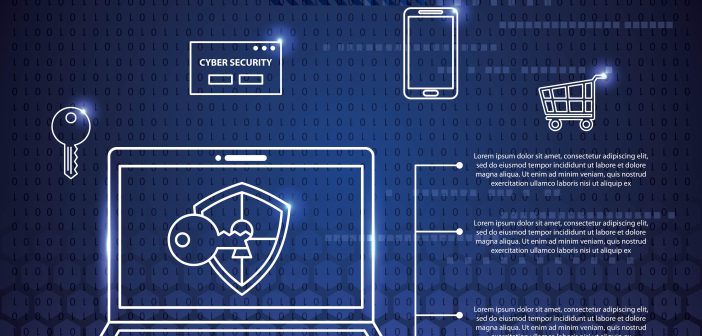Image by gstudioimagen on Freepik
Introduction
In an era marked by increasing cyber threats and digital vulnerabilities, safeguarding national security has become more crucial than ever. With government agencies at the forefront of defending against cyber attacks, ensuring that Australian government employees are equipped with the necessary knowledge and skills to identify and mitigate cyber risks is paramount. Cybersecurity awareness training plays a vital role in fortifying Australia’s cyber defenses and protecting sensitive government data and infrastructure. In this article, we’ll delve into the importance of cybersecurity awareness training for Australian government employees, the key components of effective training programs, and the role it plays in elevating national security.
The Importance of Cybersecurity Awareness Training
Cybersecurity awareness training is essential for Australian government employees as they handle vast amounts of sensitive data and play a critical role in protecting national security interests. With cyber attacks becoming increasingly sophisticated and targeted, government employees need to be vigilant and proactive in recognizing and responding to potential threats. By providing comprehensive cybersecurity awareness training, government agencies can empower their employees to identify phishing attempts, avoid social engineering scams, and adhere to best practices for data protection.
Key Components of Effective Cybersecurity Awareness Training Programs:
Understanding Cyber Threats
A foundational component of cybersecurity awareness training is educating government employees about the various types of cyber threats they may encounter. This includes phishing attacks, malware infections, ransomware, insider threats, and advanced persistent threats (APTs). By understanding the tactics and techniques employed by cyber adversaries, employees can better protect themselves and the organization against potential attacks. Training modules should cover real-world examples of cyber threats and provide practical guidance on how to recognize and respond to them.
Recognizing Social Engineering Tactics
Social engineering tactics, such as phishing, pretexting, baiting, and tailgating, are commonly used by cybercriminals to manipulate individuals into divulging sensitive information or performing actions that compromise security. Cybersecurity awareness training should focus on helping employees recognize and resist social engineering tactics, such as fraudulent emails, phone calls, and impersonation attempts. Training modules should include interactive simulations and examples to illustrate common social engineering scenarios and teach employees how to spot red flags and respond appropriately.
Practicing Good Cyber Hygiene
Practicing good cyber hygiene is essential for minimizing the risk of cyber attacks and protecting sensitive data. Cyber hygiene refers to the set of practices and behaviors that individuals can adopt to maintain their cybersecurity, such as using strong, unique passwords for each account, enabling multi-factor authentication (MFA), keeping software and systems up to date with patches and updates, and avoiding clicking on suspicious links or downloading attachments from unknown sources. Cybersecurity awareness training should emphasize the importance of practicing good cyber hygiene and provide practical tips and tools for implementing these best practices in daily work routines.
Reporting Security Incidents
Prompt reporting of security incidents is crucial for containing and mitigating the impact of cyber attacks. Cybersecurity awareness training should provide clear guidance on how and when to report security incidents, including who to contact and what information to provide. Employees should be encouraged to report any suspicious activity or potential security breaches promptly to the appropriate authorities within the organization. Training modules should include case studies and examples of security incidents to help employees understand the importance of reporting and the potential consequences of failing to do so.
Continuous Learning and Reinforcement
Cyber threats are constantly evolving, making continuous learning and reinforcement essential for staying ahead of potential risks. Cybersecurity awareness training should be an ongoing process, with regular updates and refreshers to reflect new threats, trends, and best practices. Training modules should incorporate interactive elements, such as quizzes, games, and simulations, to engage employees and reinforce key concepts. Additionally, employees should be encouraged to stay informed about emerging threats and security trends through ongoing education and professional development opportunities.
By incorporating these key components into cybersecurity awareness training programs for Australian government employees, government agencies can empower their workforce to play an active role in defending against cyber threats and protecting national security. With a well-trained and vigilant workforce, Australia can continue to defend down under and mitigate the risks posed by cyber adversaries.

Image by rawpixel.com on Freepik
The Role of Cybersecurity Awareness Training in Elevating National Security
One of the primary roles of cybersecurity awareness training is to cultivate a cyber-aware culture within government agencies. By educating employees about the various types of cyber threats and the importance of cybersecurity best practices, training programs instill a sense of responsibility and vigilance among government personnel. When employees are aware of the risks and understand their role in protecting sensitive data and critical infrastructure, they become proactive defenders against cyber attacks, thereby strengthening national security.
Cybersecurity awareness training empowers Australian government employees to recognize and respond to cyber threats effectively. Through interactive modules and practical examples, employees learn how to identify phishing emails, detect malware infections, and spot signs of suspicious activity on their networks. By providing employees with the knowledge and tools they need to identify potential threats, training programs enable them to take swift and appropriate action to mitigate risks and prevent security breaches.
Insider threats, whether intentional or unintentional, pose a significant risk to national security. Cybersecurity awareness training helps mitigate insider threats by raising awareness among government employees about the importance of data security and the potential consequences of negligent or malicious behavior. By emphasizing the importance of following security policies and procedures, training programs help foster a culture of compliance and accountability, reducing the likelihood of insider incidents that could compromise sensitive information or infrastructure.
Cybersecurity awareness training fosters collaboration and information sharing among government agencies, enabling them to collectively defend against cyber threats. By bringing employees together to learn about common threats and best practices, training programs facilitate cross-agency communication and coordination. This collaboration enables government agencies to share threat intelligence, collaborate on incident response efforts, and collectively strengthen Australia’s cybersecurity posture. By working together, government agencies can leverage their collective expertise and resources to defend against cyber threats more effectively and elevate national security.
Cybersecurity awareness training plays a critical role in elevating national security by empowering Australian government employees to recognize, mitigate, and respond to cyber threats effectively. By building a cyber-aware culture, empowering employees to recognize and respond to threats, mitigating insider threats, strengthening incident response capabilities, and enhancing collaboration and information sharing, training programs contribute to safeguarding Australia’s digital landscape. As cyber threats continue to evolve, investing in cybersecurity awareness training for government employees remains essential to ensuring that Australia remains secure and resilient in the face of emerging threats.
Conclusion
In conclusion, cyber security training in Australia is a fundamental component of Australia’s national security strategy, ensuring that government employees are prepared to defend against cyber threats and protect sensitive data and infrastructure. By investing in comprehensive cybersecurity awareness training programs that cover key concepts, best practices, and emerging threats, government agencies can empower their employees to play an active role in safeguarding Australia’s digital future. By prioritizing cybersecurity awareness and education, Australia can continue to defend down under and mitigate the risks posed by cyber adversaries.





In my pursuit of exceptional digital product design, I found a website that links me to specialized talent. These design professionals are adept at crafting engaging and efficient user interfaces and experiences. Their innovative Glow Team approaches and design prowess have been instrumental in bringing my digital products to life, ensuring they meet the highest standards of usability and design excellence.
The focus on cyber security awareness training for Australian public servants is a critical step in strengthening national defence. Beyond awareness, integrating EDR cyber security solutions can significantly enhance these efforts by providing advanced detection and response capabilities. Such technology ensures that government officials are not only informed about potential threats, but also equipped with the tools to respond effectively, protecting national security in an increasingly digital landscape.